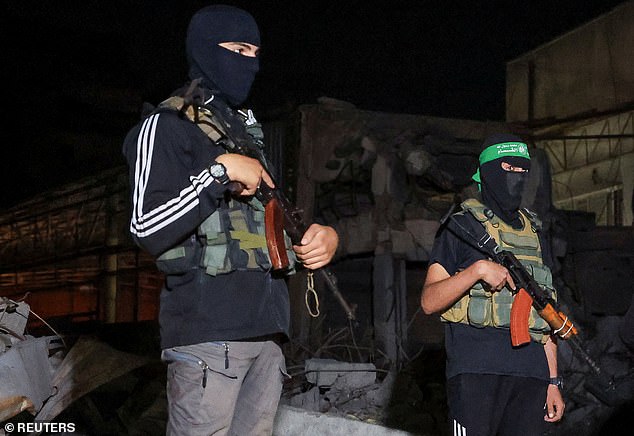In the latest flare-up in the Middle East, Israel has carried out airstrikes in southern Gaza after accusing Hamas of violating the recently brokered ceasefire.
The strikes come amid mounting concerns over the fragile peace deal mediated under Donald Trump’s guidance, which aimed to bring stability after years of conflict.
Hamas Accused of Crossing the Yellow Line
According to the Israeli military, Hamas fighters launched multiple attacks targeting Israeli forces east of the so-called “Yellow Line” buffer zone.
The assaults involved sniper fire and a rocket-propelled grenade, described as a “bold violation” of the ceasefire agreement.
Israeli officials stressed that both incidents occurred in areas under Israeli control.
No Immediate Casualties Reported
Airstrikes targeted the southern Gaza cities of Rafah and Jabalia, though there were no immediate reports of casualties.
Israeli forces framed the strikes as a direct response to attacks on their personnel, particularly focusing on terror operatives attempting to engage soldiers in Rafah and Khan Younis.
The military emphasized its ongoing commitment to neutralize threats in the region.
Hamas Denies Planning Civilian Attacks
Senior Hamas official Izzat al-Risheq maintained that the group remains committed to the ceasefire, placing blame on Israel for violating the agreement.
Despite this, U.S. officials issued warnings that Hamas might launch an “imminent” attack on civilians in Gaza—a move that would undermine the peace progress achieved by mediating nations including Qatar, Turkey, and Egypt.
Leadership Reacts With Urgency
Israeli Prime Minister Benjamin Netanyahu and Defense Minister Israel Katz convened emergency talks to address the situation.
Netanyahu instructed security forces to “act forcefully against terrorist targets in the Gaza Strip,” while hardline officials like Itamar Ben-Gvir and Finance Minister Bezalel Smotrich called for maximum military action in response to Hamas’ alleged violations.
The Ceasefire Deal and Its Fragile Progress
The ceasefire agreement, which came into effect on October 10, has already seen the release of 20 Israeli hostages and nearly 2,000 Palestinian detainees.
Under the 20-point peace plan signed in Sharm el-Sheikh, Hamas is set to have no role in governing Gaza, a condition the group has resisted while recalling 7,000 of its security personnel after Israel’s partial withdrawal.
Competing Militias and Internal Struggles
Hamas’ authority in Gaza is being challenged by local Palestinian militias, some reportedly backed by Israel.
Reports suggest that Hamas fighters have engaged in skirmishes with these rival groups as they attempt to reassert control, further complicating the fragile peace framework.
Trump and U.S. Officials Weigh In
Donald Trump has personally warned Hamas against targeting civilians, emphasizing that such actions would violate the deal.
The U.S. State Department reiterated that any attack on Gazan civilians would constitute a “direct and grave” breach of the ceasefire, promising measures to protect the population and preserve peace efforts.
Hostage Returns and Ongoing Disputes
While some progress has been made, tensions remain high over the return of bodies from hostages who died in captivity.
Hamas has released 12 of the 28 deceased hostages so far, with Israel maintaining that the Rafah border crossing with Egypt will remain closed until the remaining bodies are returned.
Israel’s Position on Ending the Conflict
Netanyahu has repeatedly stressed that the conflict cannot end until Hamas relinquishes its weapons and control over Gaza.
The group has so far rejected these demands, leaving the ceasefire agreement under intense strain and raising fears that the situation could escalate further in the coming days.
Share on Facebook «||» Share on Twitter «||» Share on Reddit «||» Share on LinkedIn